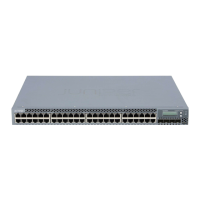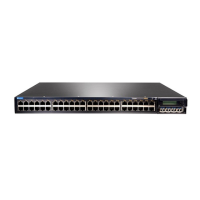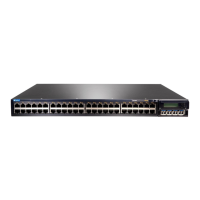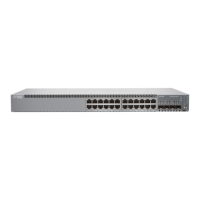• Ethernet Interfaces Overview
• EX Series Switches Interfaces Overview on page 3
• Ethernet Interfaces
Configuring the Interface Address
You assign an address to an interface by specifying the address when configuring the
protocol family. For the inet or inet6 family, configure the interface IP address. For the
iso family, configure one or more addresses for the loopback interface. For the ccc,
ethernet-switching, tcc, mpls, tnp, and vpls families, you never configure an address.
NOTE: The point-to-point (PPP) address is taken from the loopback interface
address that has the primary attribute. When the loopback interface is
configured as an unnumbered interface, it takes the primary address from
the donor interface.
To assign an address to an interface, include the address statement:
address address {
broadcast address;
destination address;
destination-profile name;
eui-64;
preferred;
primary;
}
You can include these statements at the following hierarchy levels:
•
[edit interfaces interface-name unit logical-unit-number family family]
•
[edit logical-systems logical-system-name interfaces interface-name unit
logical-unit-number family family]
In the address statement, specify the network address of the interface.
For each address, you can optionally configure one or more of the following:
•
Broadcast address for the interface subnet—Specify this in the broadcast statement;
this applies only to Ethernet interfaces, such as the management interface fxp0, em0,
or me0 the Fast Ethernet interface, and the Gigabit Ethernet interface.
•
Address of the remote side of the connection (for point-to-point interfaces
only)—Specify this in the destination statement.
•
PPP properties to the remote end—Specify this in the destination-profile statement.
You define the profile at the [edit access group-profile name ppp] hierarchy level (for
point-to-point interfaces only).
Copyright © 2015, Juniper Networks, Inc.48
Network Interfaces for EX4300 Switches
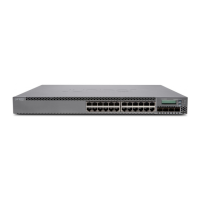
